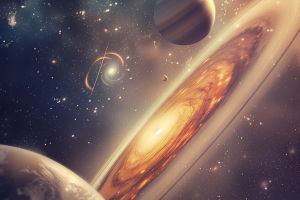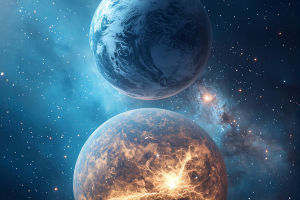In the vast silence of space, far from the glow of familiar constellations, lie cold, shadowy cradles where new stars are born. These stellar nurseries—massive clouds of gas and dust—hide one of nature’s most breathtaking transformations.
Within their depths, invisible to ordinary telescopes, gravity quietly gathers matter into dense knots, setting off a chain of events that will ignite a new sun. From the chaotic swirl of turbulence to the invisible grip of magnetic fields, each force plays a part in shaping these cosmic newborns.
Studying this process isn’t just about understanding how a single star flickers to life—it’s about uncovering the story of galaxies, planets, and the very elements that make life possible.
From Cloud to Star: The Birth Process
Star formation begins with dense pockets, called cores, within molecular clouds. Subjected to gravitational pull, these cores start to contract, drawing in gas and dust from their surroundings. As material accretes, the core becomes hotter and denser, eventually forming a proto-star at its center. This process is enigmatic, largely concealed by dust that shrouds the nascent star from visible telescopes.
Northwestern University's Michael Grudić summarizes the observational challenge: “Stars also form in clouds of dust, so they are mostly hidden. For astrophysicists to view the full, dynamic process of star formation, they require powerful simulations and cutting-edge telescopes”.
The Roles of Turbulence and Magnetic Fields
Cosmic nurseries do not remain static; instead, they are shaped by turbulence and magnetic fields. Turbulence stirs the gas, generating localized areas of high density and triggering the collapse needed for proto-star formation. Magnetic fields, meanwhile, provide both resistance and regulation.
Stellar Clusters and Massive Star Formation
Most stars are not solitary at birth but emerge in clusters. Within the densest regions of stellar nurseries, groups of proto-stars evolve together. Here, competitive accretion can lead to the formation of massive stars—celestial giants that dramatically influence their surroundings through intense radiation and stellar winds.
Turbulence is thought to facilitate the birth of these massive bodies, while also inhibiting lower-mass star formation in certain regions. These feedback mechanisms help set the pace and the efficiency of star production within a galaxies.
Claude-André Faucher-Giguère, a noted astrophysicist, explains why these complexities matter: “How stars form is very much a central question in astrophysics. It’s been a very challenging question to explore because of the range of physical processes involved. This new simulation will help us directly address fundamental questions we could not definitively answer before”.
Early Universe vs. Modern Star Formation
Research has revealed that the earliest generations of stars, forming when the universe was far younger, may have emerged from clouds with very different characteristics. Some studies suggest ancient stellar nurseries were “fluffy” rather than filamentary, composed mostly of hydrogen and helium, lacking the heavier elements present today. Such differences likely affected how efficiently stars formed and what types of stars populated the early cosmos.
The Broader Impact on Galaxies and Life
The process within these stellar nurseries does not merely seed stars, it shapes entire galaxies. The formation and subsequent death of massive stars inject heavy elements such as carbon and oxygen into the surrounding medium, enriching future generations of stars and allowing for the eventual formation of planets. As molecular clouds disperse or are consumed, the galaxies appearance, star content, and even potential for supporting life are fundamentally altered.
Exploring cosmic nurseries illuminates not just the wonder of star birth, but also the engines that drive cosmic evolution. Advances in both observation and simulation continue to unravel the secrets locked within these dark clouds. Each nursery, whether filamentary or fluffy, plays a role in weaving the fabric of the universe.
Understanding these processes is pivotal, not simply for charting the history of stars, but for comprehending the origins of galaxies, planetary systems, and ultimately, the very ingredients that make life itself possible


